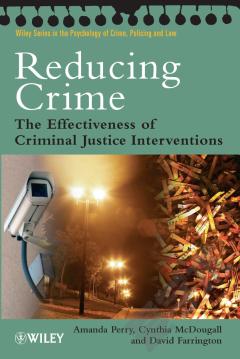Breaking the Pendulum —— The Long Struggle Over Criminal Justice
----- 打破摇摆不定的状态: 刑事司法中的长期战
In Breaking the Pendulum, Philip Goodman, Joshua Page, and Michelle Phelps debunk the pendulum model of American criminal justice, arguing that it distorts how and why punishment changes. From the birth of the penitentiary through recent reforms, the authors show how the struggle of players in the penal field shapes punishment.
{{comment.content}}








 京公网安备 11010802027623号
京公网安备 11010802027623号